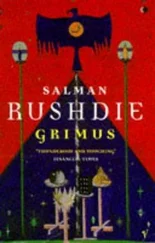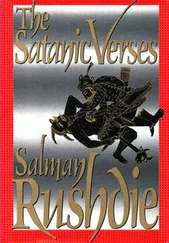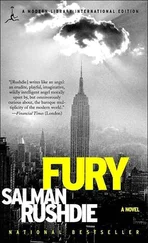There was the earth and there were the planets. The earth was not a planet. The planets were the grabbers. They were called this because they could seize hold of the earth and bend its destiny to their will. The earth was never of their kind. The earth was the subject. The earth was the grabbee.
Pachigam was the earth, the grabbee, helpless, and powerful uncaring planets stooped low, extended their celestial and merciless tentacles and grabbed.
Who lit that fire? Who burned that orchard? Who shot those brothers who laughed their whole lives long? Who killed the sarpanch? Who broke his hands? Who broke his arms? Who broke his ancient neck? Who shackled those men? Who made those men disappear? Who shot those boys? Who shot those girls? Who smashed that house? Who smashed that house? Who smashed that house? Who killed that youth? Who clubbed that grandmother? Who knifed that aunt? Who broke that old man’s nose? Who broke that young girl’s heart? Who killed that lover? Who shot his fiancée? Who burned the costumes? Who broke the swords? Who burned the library? Who burned the saffron field? Who slaughtered the animals? Who burned the beehives? Who poisoned the paddies? Who killed the children? Who whipped the parents? Who raped that lazy-eyed woman? Who raped that grey-haired lazy-eyed woman as she screamed about snake vengeance? Who raped that woman again? Who raped that woman again? Who raped that woman again? Who raped that dead woman? Who raped that dead woman again?
The village of Pachigam still exists on the official maps of Kashmir, due south of Srinagar and west of Shirmal near the Anantnag road. In such public records as are still available for inspection its population is given as three hundred and fifty, and in a few guides for the benefit of visitors there are passing references to the bhand pather, a dying folk art, and to the dwindling number of dedicated troupes that seek to preserve it. This official existence, this paper self is its only memorial, for where Pachigam once stood by the blithe Muskadoon, where its little street ran along from the pandit’s house to the sarpanch’s, where Abdullah roared and Boonyi danced and Shivshankar sang and Shalimar the clown walked the tightrope as if treading upon air, nothing resembling a human habitation remains. What happened that day in Pachigam need not be set down here in full detail, because brutality is brutality and excess is excess and that’s all there is to it. There are things that must be looked at indirectly because they would blind you if you looked them in the face, like the fire of the sun. So, to repeat: there was no Pachigam anymore. Pachigam was destroyed. Imagine it for yourself.
Second attempt: The village of Pachigam still existed on maps of Kashmir, but that day it ceased to exist anywhere else, except in memory.
Third and final attempt: The beautiful village of Pachigam still exists.
The increased use of fidayeen, suicide bombers, by the group led by Maulana Bulbul Fakh and also by other insurgents, Hizb-ul-this, Lashkar-e-the-other, Jaish-e-whatever-you-want, was a new annoyance, thought General Hammirdev Kachhwaha hunkered down in the dark, but it was also an indication that purely military activities, even of the so-called iron commando, had been judged to lack sufficient teeth, and that a second, decisive phase had begun. The milquetoasts of secular nationalism had had their day, and as the months passed looked more and more like sidelined irrelevances. “Kashmir for the Kashmiris” was no longer an option. Only the big boys were left standing, and so it was to be Kashmir for the Indians or Kashmir for the Pakistanis whose proxies the terror organizations were. Things had clarified and the creation of clarity was after all the universal goal of military activity. General Kachhwaha liked this simpler, clearer world. Now, he told himself, it’s either us or them, and we are the stronger, and will inevitably prevail.
He had to concede that the suicide missions had had
successes. Here they all were in his memory. July 13 last year, attack on Border Security Force camp at Bandipora, deputy inspector general and four personnel killed. August 6, one major and two junior commissioned officers slain at Natnoos army camp. August 7, colonel and three personnel done to death at Trehgam army camp. September 3, in a daring raid on the perimeter area of Army Corps HQ Badami Bagh itself, ten personnel murdered including a public relations officer (no loss, in General Kachhwaha’s unexpressed private view). And so it went on, pinprick after pinprick. December 2, Army HQ, Baramulla, one JCO lost. December 13, Civil Lines, Srinagar, five personnel. December 15, army camp, Rafiabad, many injuries, no fatalities. January 7, meteorological center, Srinagar, attacked. Four personnel lost. January 10, car bomb in Srinagar. February 14, unmanned pony used to carry an IED (improvised explosive device) into security force camp at Lapri, district Udhampur. General Kachhwaha could admire initiative when he saw it. However, the enemy’s losses during these encounters were also heavy. They had been hit hard. The iron commando had been shot full of holes. Hence the new tactic. They accepted some small loss of life in order to inflict large wounds. February 19 saw the first fidayeen attack on Badami Bagh. Two personnel killed. Three weeks later, a second suicide bomb attack on HQ, four army personnel dead.
There were those who claimed that the terrorists, inspired by fidayeen activities, were gaining momentum, that the war was being lost. There were calls for General Kachhwaha to be replaced. Fidayeen bombed the police control room in Srinagar (eight personnel killed). Fidayeen attacked Wazir Bagh base in Srinagar (four killed). Fidayeen attacked Lassipora army base, district Kupwara (six). And alongside this, there was a non-fidayeen ambush at Morha Chatru, Rajouri district (which claimed fifteen lives), a patrol party ambushed at Gorikund, Udhampur (five lives), an attack on Shahlal base, Kupwara (five), on Poonch police station (seven). IEDs were placed under military buses at Hangalpua (eight) and Khooni Nallah (five). Very well, General Kachhwaha grudgingly conceded, the list was long. Fidayeen attacks at Handwara, twice. The annual Amarnath pilgrimage attacked, nine pilgrims killed. More Hindus dead at Raghunath temple in Jammu courtesy of two fidayeen bombers. Fidayeen attacked a bus stand in Poonch, and the deputy superintendent of police was killed. A three-man fidayeen squad stormed the army camp at village Bangti on Tanda Road, Akhnoor, Jammu: eight dead, including a brigadier, and four top generals injured. Then, at last, there were some successes to report. Baby Che, the notorious militant Anees Noman, was dead. A fidayeen attack on a security force camp in Poonch was foiled; two foreign mercenaries were slain. A daring and highly dangerous fidayeen attack on the chief minister’s residence on Maulana Azad Road, Srinagar, was thwarted; both terrorists were killed. The tide was turning. The political echelon must appreciate this. The situation was being stabilized. Approximately one hundred alleged insurgents and their alleged associates were being shot dead every day. The point was to have the will to succeed. If fifty thousand deaths were required there would be fifty thousand deaths. The battle would not be lost while the will was there and he, General Kachhwaha, was the embodiment of that will. Therefore the battle was not being lost. It was being won.
News of the razing of Pachigam spread quickly. The Hammer of Kashmir had made an example of this village and his strong-arm tactics had been effective in their way. People were even more scared of harboring militants than before. The few survivors of the crackdown action, some oldsters, some children, a few farmhands and shepherds who had managed to hide in the wooded hills behind the village, made their way to the neighboring village of Shirmal where they were shown such kindnesses as the Shirmalis could afford in that time of empty pockets and open mouths. The old resentments between Pachigam and Shirmal were forgotten as if they had never been. Bombur Yambarzal and his wife Hasina a.k.a. Harud personally ensured that the refugees were fed and housed for the time being. The ruins of Pachigam were still smoldering. “First let things cool down,” Harud Yambarzal told the terrified, heartbroken Pachigamis, “and then we’ll see about rebuilding your homes.” She was trying to sound as reassuring as she could but was inwardly panic-stricken. In the privacy of the Yambarzal home she hit both her sons across their faces with an open hand and said that unless they broke all their connections with militant groups immediately she personally would cut off their noses while they slept. “If you think I will allow what happened to Pachigam to befall this village,” she hissed at them, “then, boys, you don’t know your mother. I raised you to be sensible and practical fellows. This is when you repay the debt of childhood and do as you are told.” She was a formidable lady and her sons the secretive electricians mumbled okay, okay, and skulked out the back way to smoke beedis and wait for the ringing in their ears to stop. By that time there was a shortage of young men in the villages of Kashmir. They had gone underground in Srinagar, which was still safer than the villages, or underground to join the militants, or underground into the army’s counterinsurgency fifth columns, or underground across the Line of Control to join the Pakistani ISI’s jihadi groups or just underground into their graves. Hasina Yambarzal had held on to her boys by sheer force of personality. She wanted them where she could see them: overground, at home.
Читать дальше











